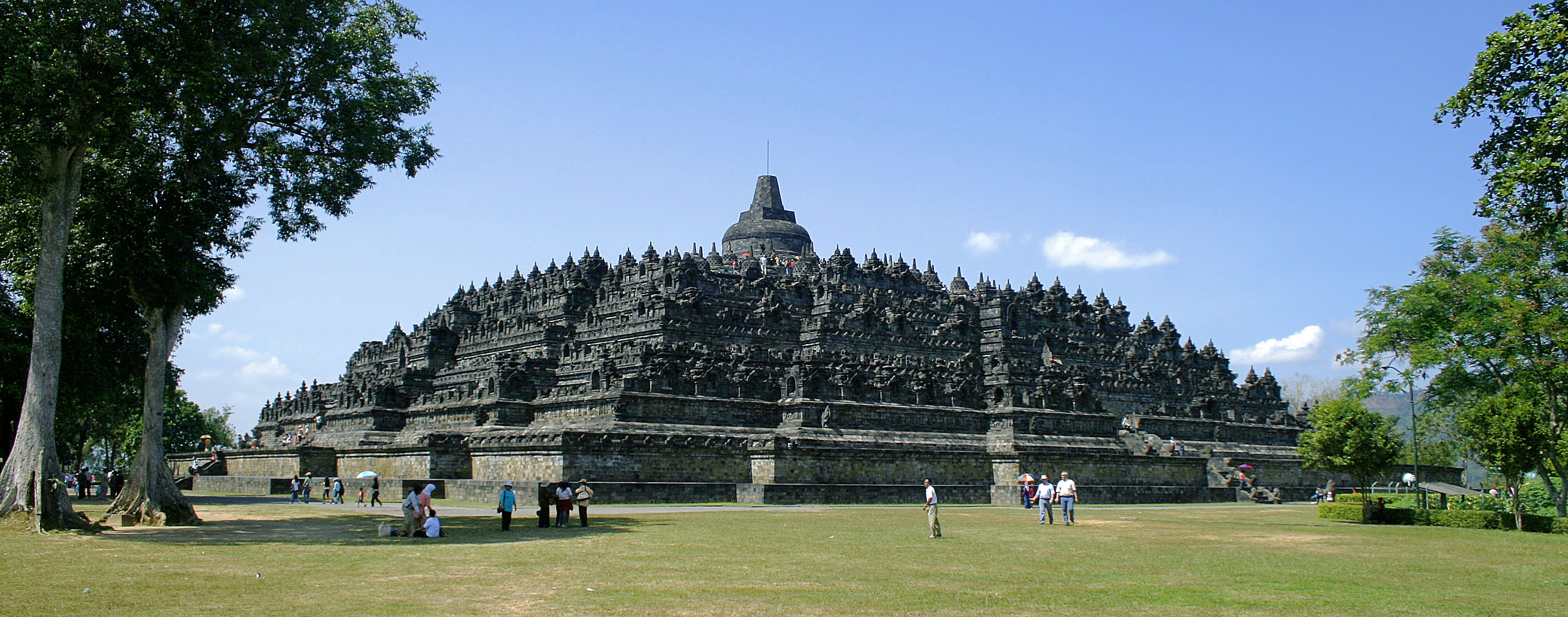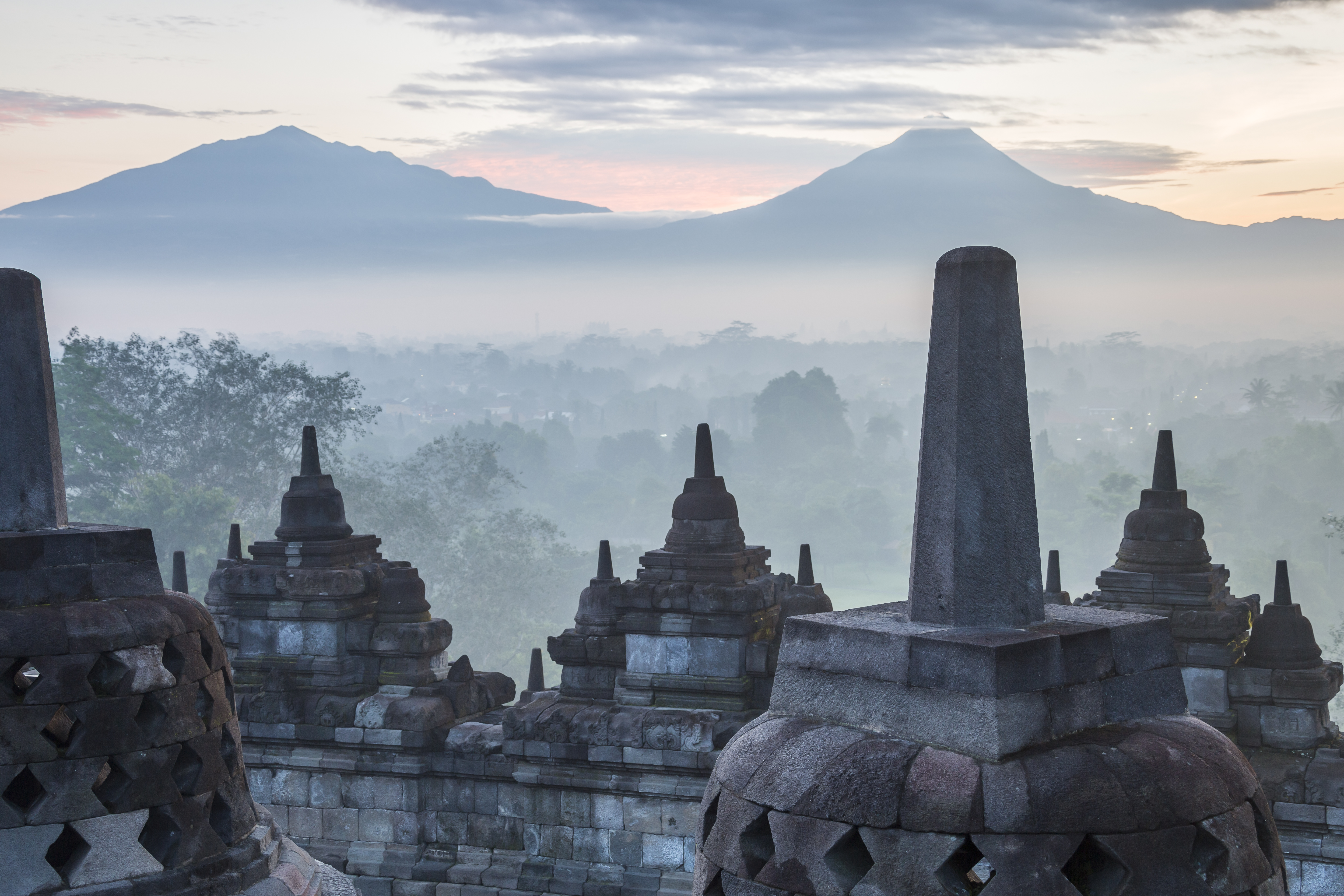Time Periods
Paleolithic
Mesolithic
Neolithic
Chalcolithic
Bronze Age
Iron Age
Classical Period
Post-Classical Period
Early Modern Period
Industrial Period
Contemporary Period
Time Periods
Paleolithic
Mesolithic
Neolithic
Chalcolithic
Bronze Age
Iron Age
Classical Period
Post-Classical Period
Early Modern Period
Industrial Period
Contemporary Period
About
Borobudur is a 9th-century Mahayana Buddhist temple located in Central Java, Indonesia. Built during the reign of the Sailendra Dynasty, it is a monumental step pyramid constructed with andesite stone and comprised of nine stacked platforms. The temple is renowned for its extensive collection of 2,672 intricate relief panels and 504 Buddha statues, with a central dome surrounded by 72 Buddha-stupas. Borobudur exemplifies Javanese Buddhist architecture, merging indigenous ancestor worship with Buddhist concepts of nirvāṇa. It served as a shrine to the Buddha and a pilgrimage site until its abandonment, likely due to volcanic activity and the rise of Islam in the region. Rediscovered in the 19th century, Borobudur remains a significant archaeological and cultural site, celebrated as the largest Buddhist temple in the world.
Gallery
Explore photographs of ancient structures, artifacts, and archaeological excavations at Borobudur



Archaeological Features
Explore the unique architectural and cultural elements found at this historical site
Religious and Ritual Structures
Artistic and Decorative Features
Transportation and Communication Structures
Historical Timeline
Journey through time and discover key events in this site's archaeological history
Plan Your Visit
Details
- Country
- Indonesia
- Source
- Wikipedia
More Sites in Indonesia

Jabung
14th-century brick Buddhist temple in Java.

Ratu Boko
Fortified palace complex on a hilltop.

Ceto Temple
Fifteenth-century Javanese-Hindu temple on Mount Lawu.

Jago Temple
13th-century Hindu temple in East Java

Bojongmenje
7th-century Hindu temple ruins in Java.

Umbul Temple
9th-century Hindu temple with bathing pools.